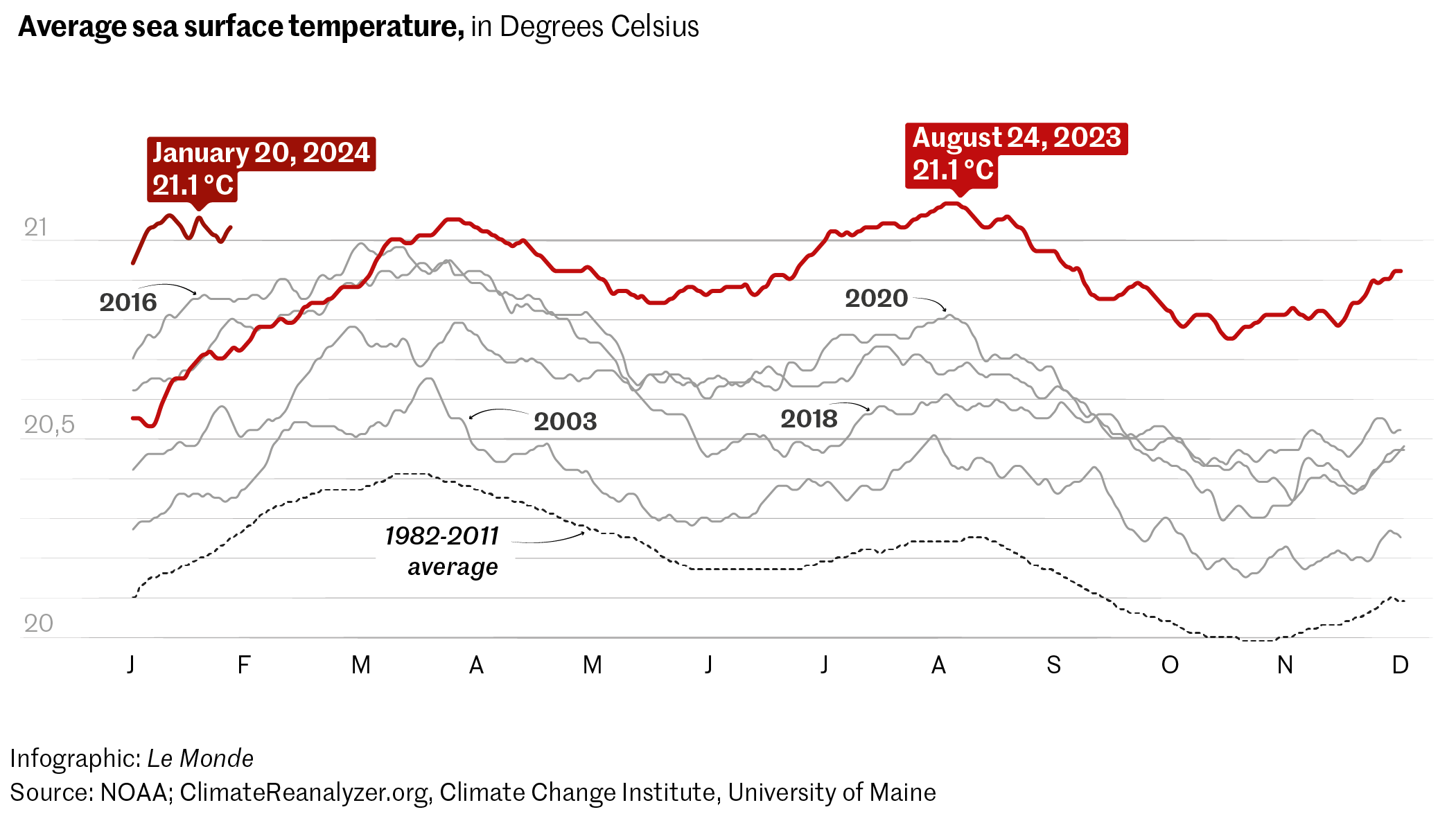


The European Union's Copernicus weather institute called them "marine heat waves with major, potentially devastating impacts." The US National Oceanic and Atmospheric Administration (NOAA) has "nine consecutive months of record temperatures," and a study published on January 11 in the journal Advances in Atmospheric Sciences noted that there was "enough energy [absorbed by the oceans in one year] to boil away [up to] 2.3 billion Olympic-sized swimming pools." Throughout 2023, the hottest year on record since record-keeping began, scientists the world over have had to compete with inventive language to describe the state of the world's oceans and seas.


The areas of the equatorial Pacific, North Atlantic, Mediterranean and Caribbean: These regions have all remained persistently in the red, sometimes with even larger temperature anomalies than those observed in the atmosphere. Julie Deshayes, a climatologist at the Oceanographic and Climate Laboratory: Digital Experimentation and Approaches (LOCEAN), summed up the situation: "We've endured an exceptional year, due to the direct effects of climate change and natural variability with the El Niño phenomenon. It is actually extraordinary when compared with the past, and normal when compared with the future that we can expect as a result of greenhouse gas emissions. And it's now that we need to do everything we can to limit emissions, if we want to have any chance of maintaining future years at this level."
On a global level, the average Sea Surface Temperature (SST) measured worldwide broke its monthly records from April to December 2023, reaching the unprecedented level of 21.1 °C on August 23 and 24. The previous 20.95 °C record had been set in March 2016, towards the end of a strong El Niño event.
Between April and December 2023, the average Sea Surface Temperature (SST) worldwide broke its monthly records, reaching the unprecedented level of 21.1 °C on August 23 and 24. As a result of a strong El Niño episode in March 2016, the previous record stands at 20.95 °C.
This trend continued in January 2024, as new highs of 21.1 °C were recorded on January 10 and 20. A special focus has been placed on the North Atlantic, which experienced exceptionally warm SSTs from June to December 2023, with anomalies that were well above average. On August 31, 2023, the SST reached a record 25.19 °C in the North Atlantic – the previous highest daily SST for the North Atlantic was 24.81 °C, recorded in September 2022 – an increase of 0.91 °C above average. In the northeastern Atlantic Ocean, this increase reached 1.36 °C.
You have 70% of this article left to read. The rest is for subscribers only.
